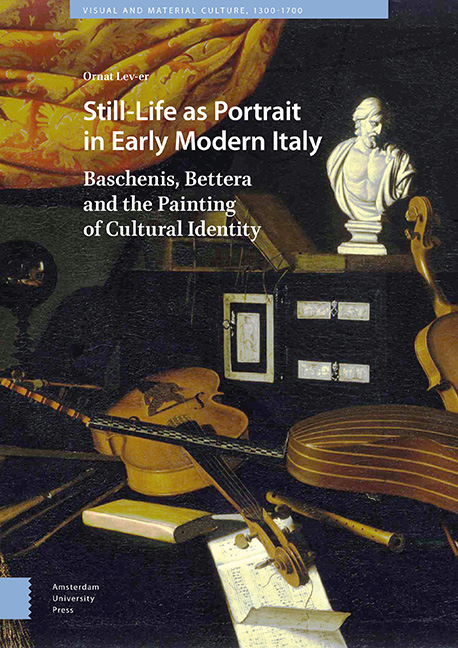 Still-Life as Portrait in Early Modern Italy
Still-Life as Portrait in Early Modern Italy 4 - Banned Books and Blockbusters
Published online by Cambridge University Press: 23 June 2021
Summary
This chapter centres on the books depicted in Baschenis's and Bettera's paintings, and demonstrates their role as references pointing to the cultural and intellectual interests of upper-class Italians, especially of residents of Bergamo. The books captured in these paintings functioned as lighthouses in the cultural sphere of Bergamo, beacons whose intensity was modulated by the painter. These volumes guided the viewer-reader to engage in deep reflection, discussion, and debate, to assume responsibility, and even to experience enjoyment and pleasure.
The existing research on Baschenis's and Bettera's work contains only laconic and arbitrary mentions of this or that painted book, and lacks an in-depth discussion of their significance and purpose. The treatment of these represented volumes has been limited to their inclusion in inventories of books found in the paintings. Baschenis's biographer Tassi, for instance, provided readers with a list including: ‘Chests, letters, music sheets […] books [italics mine], small plaster figurines, and everything his imagination could offer.’ Rossi notes only that the inclusion of a title or of the author's name on the depicted book's spine served as a form of dedication to the painting's commissioner. De Pascale, meanwhile, drew a connection between the legal tomes in one part of the Agliardi Triptych and the fact that the Agliardi brothers were jurists.
Among the 36 paintings by Baschenis and Bettera examined in this study, 29 contain books – poetry books, scholarly works, history books, and even innovative novels. In all of these compositions, the books are set on a surface spread with a colourful cloth or carpet, alongside or among musical instruments, and sometimes positioned on a case; 60 per cent of the books have a visible title, while the unidentified volumes represent the generic concept of a book. Such unidentified books appear in the works of both painters – a small number of volumes in Baschenis's case, and many more in Bettera's oeuvre. The discussion in this chapter centres on twelve compositions selected from Baschenis's and Bettera's body of paintings – nine by Baschenis and three by Bettera – which together contain nineteen different books.
- Type
- Chapter
- Information
- Still-Life as Portrait in Early Modern ItalyBaschenis, Bettera and the Painting of Cultural Identity, pp. 127 - 180Publisher: Amsterdam University PressPrint publication year: 2019


